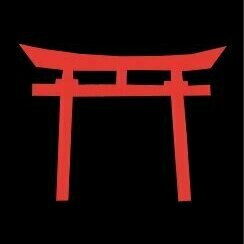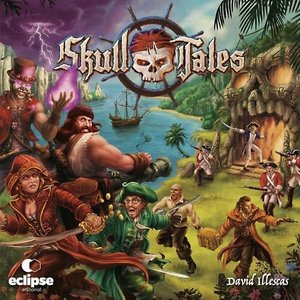
Skull Tales: Full Sail!
Tabletop Game
Skull Tales: Full Sail! Is a semi-cooperative pirate adventure game for 1 to 5 players. In Skull...
Boardgames Pirategames 2018Games

Hamsters vs. Hippos
Tabletop Game
The hamsters have escaped their enclosure at the zoo and are making a run for it! Suddenly they come...
Purple Phoenix Games (2266 KP) rated A Battle of Onin in Tabletop Games
Feb 9, 2021
A Battle for Onin is a trick-taking card game where players will be using Shoguns, Ninjas, Samurai, and Monks as suits and each suit will have differing levels of hierarchy. The first player to earn 35 total influence (VP) will claim victory.
DISCLAIMER: We were provided a prototype copy of this game for the purposes of this review. These are preview copy components, and I do not know for sure if the final components will be any different from these shown. Also, it is not my intention to detail every rule in the game, as there are just too many. You are invited to download the rulebook, back the game through the Kickstarter campaign, or through any retailers stocking it after fulfillment. -T
To setup shuffle the deck of cards and deal each player 13 cards. The dealer then flips the top card of the deck and becomes the Ruling Class (trump) for the hand. The game is now setup and ready to begin!\
After the Ruling Class has been revealed, the player left of the dealer will make a bid for how many Conscriptions (tricks) they believe they will take in the round, with a minimum bid of 3 tricks for all players. Each other player will do the same until the leading player’s turn comes back around. That player then proceeds to play cards from hand in attempt to win tricks. Like in most trick-taking games player will need to follow the suit that was led (or flipped at the beginning of the round). A twist here is that trump may not be led until it has been used to win a trick previously within the round.
As mentioned earlier, each suit has a hierarchy of power, where Bronze is the lowest in power increasing to Silver, then to Gold, and finally to Jade. Within these divisions are yet three more classifications of power: one sphere (lowest) to three spheres (most powerful). In addition still is one card from each suit whose background is orange in color and features one large sphere. These are the Legendary cards, and the most powerful of each suit. Legendary cards may be used as the highest-ranking card in their suit, or as a Ruling Class card. When played as Ruling Class (trump) the hierarchy of Legendary cards are as follows: Monk (lowest), Samurai, Ninja, Shogun (most powerful).
Play continues with players using their cards to win Conscriptions (tricks) and meet their bid. Should a player meet their bid exactly then they score Influence (VP) for their tricks won. Should a player win more tricks than bid earlier, they still score Influence for the tricks won, but those tricks in excess of the bid amount are scored also as Corruption. When a player meets seven Corruption they immediately lose 10 Influence and the Corruption counter resets for that player. If, by chance, a player does not meet the mandatory bid of three tricks, their Influence is lowered by one point. However, should a player bid higher than the minimum of three but not meet that bid their score will be reduced by the amount of the bid for the round (example: a player bids seven tricks but earns only five. They reduce their Influence by seven points – ouch).
Once scores are tallied at the end of each round, a winner may be announced if they score at least 35 points. If no winner is crowned this round, a new dealer is assumed and another round setup as at the start of the game.
Components. Again, this is a prototype copy of the game and this copy is actually hand-made by the good people at Guise Gaming. Each card in this copy is laminated and the game box is HAND PAINTED. I have never received a hand painted box before, and it is certainly appreciated. So aside from the non-manufactured components, the art is quite good on the cards. I know some players will have issues with the backgrounds seeming plain, but I quite appreciate it so that I can concentrate on the game and not be overly distracted by what may be happening in the backgrounds.
Gameplay is good, if not a bit confusing at first. With four different suits containing essentially the standard 13 cards per suit it should be an easy no-brainer to keep things squared away. However, I found that having the rule booklet open to the page detailing the hierarchy of sphere color/material was very handy for other players. The Legendary cards are easy to distinguish because they look cool and different from all the other cards. I really know nothing about any Asian language, so the characters (or letters/words) depicted on the cards are of no help to me trying to distinguish power levels.
That said, when contacted by the publisher about A Battle of Onin, they mentioned that other people were calling it a theming of Spades. While I can understand this simplification, what I have yet to mention is that the game also comes with a bevvy of optional scoring rules and a welcoming message to include any sort of house rules deemed enjoyable. Spades does not do that, to my knowledge. While the vanilla gameplay is very similar to Spades, A Battle of Onin using any of these optional scoring modes certainly adds layers of complexity that may be daunting to use at first, but may attract more hardcore gamers.
All in all I am so glad I was able to try A Battle of Onin. Once the suits and power levels are learned, the game is quite snappy and enjoyable. The art is beautiful, and I applaud the use of orange background for the Legendary cards. If you are looking for a different spin on Spades I urge you to take a look at A Battle of Onin. It might surprise you with the varying levels of difficulty found within the optional scoring rules, and a bit more intrigue than the classic game upon which it is based. Personally, my D&D Monk might argue that he is far superior to any Shogun, but also he just kicked in a door that contained a room full of vampires. So there’s that.
Purple Phoenix Games (2266 KP) rated Doctor Who: Time of the Daleks in Tabletop Games
Sep 2, 2021
Doctor Who: Time of the Daleks (which I will carefully refer to as DW from here on out though I would never abbreviate to Dr.) is an adventure dice racing game, even though the only official tag is dice. In it, players take on the roles of different Doctor regenerations and will travel through time and space collecting companions, Timey-Wimey cards, and Sonic Charges in order to manipulate dice rolls to defeat Dilemmas and Time Anomalies that pop up at the absolute worst times.
To setup, follow the rulebook instructions – there are just too many components to detail here. The game takes up quite a bit of table space, so do make sure to use your largest table.
On a player’s turn they will be adding Sonic Charges, shuffling up companions, and rolling the TARDIS die to determine travel. Once at a location, the Doctor (and subsequent harem) can Adventure by assessing the challenge of dice results printed on the Location board plus the Dilemma disc combined. It is these icons that must be rolled (and possibly manipulated) in order to have a successful adventure. If successful, typically this involves a reward of moving the TARDIS pawn on the main Web of Time board closer to Gallifrey, in addition to other rewards. Failure on an adventure will typically result in the Dalek ship being moved further from Skaro and closer to Gallifrey.
Once the Doctors have had their turn, the Daleks will take a turn. Immediately move the Dalek ship one space on the Web of Time track towards Gallifrey, and if they have reached Gallifrey before any Doctor, or on the same turn as a Doctor, the Daleks win and the Doctors all lose. If not, play continues in this fashion until one of those win conditions are met, along with a couple more loss conditions I will leave you to discover.
This is a very pared-down synopsis of the rules, and I have intentionally left out several rules so as not to bog down my paraphrasing with minutia. Take this into consideration when determining if this is the game for you.
Components. All in all the components in DW are absolutely stellar! All the cardboard is thick and features great art and screencaps (which is a polarizing subject that I simply don’t mind). The dice are great quality, though I wish they had chosen a different color for the blue dice so that the TARDIS die would be the only blue in the box. The minis are great, and have interchangeable bases because throughout the game the Doctors may have to regenerate, thus switching to a different Doctor mid-game (awesome mechanic for this IP by the way).
Let me tell you why I like this DW game and why I do not. Firstly, the game is just too hard for me. Maybe it’s how I roll the dice, but I feel I am almost never in possession of enough resources to be able to reroll or manually manipulate my dice results enough to have the requisite amount of successful adventures. Some challenges require the Doctor to roll six dice, but then there are restrictions in play that drop a Doctor’s dice pool down to six, thus creating a you-must-roll-EXACTLY-what-you-need-to-win scenario that is tough to swallow for a dice game. Also, this next part is completely personal opinion, I wish that 10 was included in the starter box. I got my 11, and I appreciate that, but I feel like 10 is the most widely-popular Doctor in the franchise, or at least in New Who, so the ball was dropped here. I know I can purchase 10 in an expansion pack with 5 (and kudos to whomever made THAT combination), but I want him NOW.
Time travel games are so difficult to pull off, and with Doctor Who you HAVE to consider that time travel will play a very important part in gameplay. I believe this title handles it well, and even allows for multiple Doctors to work together (let’s not talk about time paradoxes for now). That is great and allows for excellent cooperative play, so I applaud the designer for that. I also enjoy the different abilities given by each different regeneration as well as what the companions each bring to the table. Perhaps a companion will add certain colors of dice to the Dice Pool, or allow the Doctor to switch out some of his generic dice for stronger and more specific dice, or simply allow rerolls of certain colors of dice. I dig that a lot. And seeing my precious companions in the game matched up to their Doctors fills me with a sense of nostalgia that I just do not feel in other games.
While this has been the subject of much deliberation on my part, I will be keeping my copy of the game, and will most definitely be adding 5 and 10 to the mix. I really want to like this game more than I do, and maybe having 10 in my arsenal is enough to do it, though I have my doubts. I love the Doctor Who IP and love dice games. I think this is a good game overall, and will continue to explore it with other gamers. Something will click, I’m sure of it. Purple Phoenix Games gives this one wibbly-wobbly 8 / 12. If you need a difficult dice game in your collection and also love the Doctors, pick up a copy. But also do yourself a favor and grab a copy of any expansion that includes your favorite Doctor – you will thank me later. Spoilers, sweetie, that’s coming in tomorrow’s post.
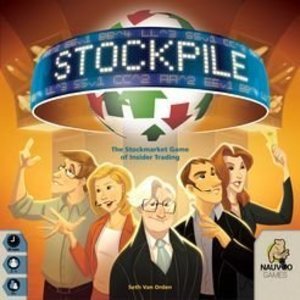
Stockpile
Tabletop Game
Stockpile is an economic board game that combines the traditional stockholding strategy of buy low,...
BoardGames StockBrokerGames
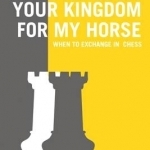
Your Kingdom for My Horse: When to Exchange in Chess: Tips to Improve Your Chess Strategy
Book
The great Mikhail Botvinnik, world champion said: 'The foundation of chess is exchanging/' Knowing...
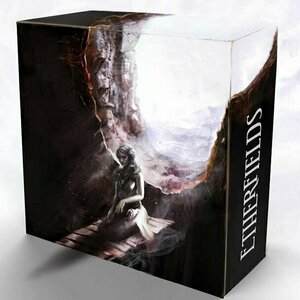
Etherfields
Tabletop Game
Etherfields is a narrative, cooperative game for 1 - 4 (5 with the 5th player expansion). A series...
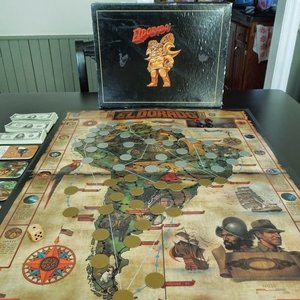
Eldorado
Tabletop Game
A fun, light, but hard to find game where players explore South America in search of the Eldorado,...
Boardgames ExplorationBoardGames
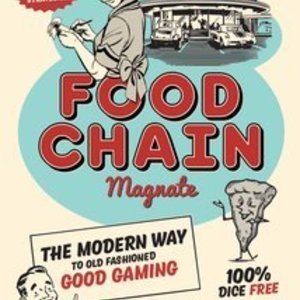
Food Chain Magnate
Tabletop Game
"Lemonade? They want lemonade? What is the world coming to? I want commercials for burgers on all...
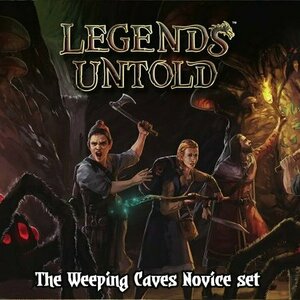
Legends Untold: The Weeping Caves Novice Set
Tabletop Game
Legends Untold is a co-operative card based adventure game for 1-8 players(4 players in the basic...
